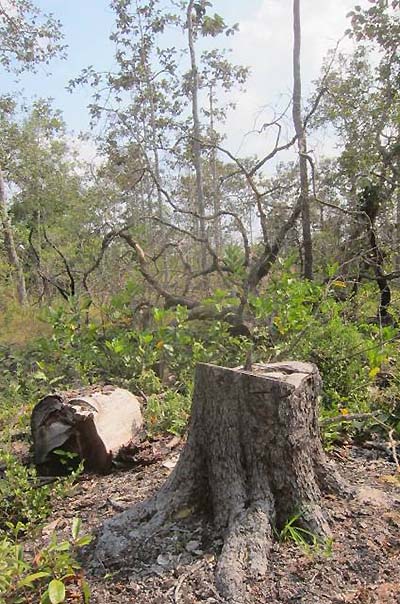Home > Research > Research Results > Research Results 2018 > Slow recovery after deforestation in heath forests in Cambodia
Update:January 18, 2018
Main content starts here.
Slow recovery after deforestation in heath forests in Cambodia
| Article title |
Stand carbon dynamics in a dry Cambodian dipterocarp forest with seasonally flooded sandy soils |
|---|---|
| Author (affiliation) |
Eriko Ito (a), Naoyuki Furuya (a), Jumpei Toriyama (b), Yasuhiro Ohnuki (b), Yoshiyuki Kiyono (b), Makoto Araki (b), Heng Sokh (c), Sophal Chann (c), Saret Khorn (c), Vanna Samreth (c), Thea So (c), Bora Tith (c), Samkol Keth (c), Chandararity Ly (c), Phallaphearaoth Op (c), Yukako Monda (d), Mamoru Kanzaki (d) (a) Hokkaido Research Center, FFPRI, Sapporo,Hokkaido,Japan. (c) Forestry Administration, Phnom Penh, Cambodia. (d) Kyoto University, Kyoto, Japan. |
| Publication Journal |
Cambodian Journal of Natural history:109-127, June 2017 |
| Content introduction |
Rapid deforestation in developing countries is a growing concern. Since 2002, we have been studying forest dynamics in Cambodia, where forest development is rapid. One of the study plots is a low-diversity deciduous heath forest on oligotrophic alluvial sandy soil and that is dominated by Dipterocarpus obtusifolius, which belongs to the family Dipterocarpaceae. A study on the long-term dynamics of this forest revealed that its growth is slow and that the rate of carbon accumulation is less than half that of other deciduous forests in Cambodia. Further, there were fewer dying trees and lower recruitment of new saplings (establishment). In 2014, the survey plot was illegally logged and 43% of the tree carbon mass was lost. Although the lost carbon mass corresponds to 30 years’ worth of growth, it is estimated that the remaining trees will take a longer time to restore the carbon mass. As new tree populations establish slowly, it is feared that logged areas will remain treeless for a long time.This study showed that although heath forests are stable when they are not disturbed by humans, they are vulnerable to forest degradation and recover very slowly once disturbed. Sustainable forestry requires forest management based on forest dynamics such as growth rates and population establishment. The results of this study will be useful for preparing new management guidelines  Photo. Illegal logging in an area of the heath forest. |
Copyright © Forest Research and Management Organization. All rights reserved.
